
The fully restored Tara Bodhisattva statue unveiled to the public. Photo: Truong Trung / Tuoi Tre
On Wednesday, the Da Nang Museum of Cham Sculpture launched the thematic exhibition 'National Treasures - Heritage at the Heart of Da Nang,' showcasing 19 national treasures newly belonging to the city after an administrative merger in July.
According to Le Thi Thu Trang, director of the museum, the exhibition not only highlights the most important artifacts of the Sa Huynh, Dong Son, and Cham cultures, but also outlines a portrait of the new Da Nang -- a land where multiple civilizations were born, converged, and intertwined.
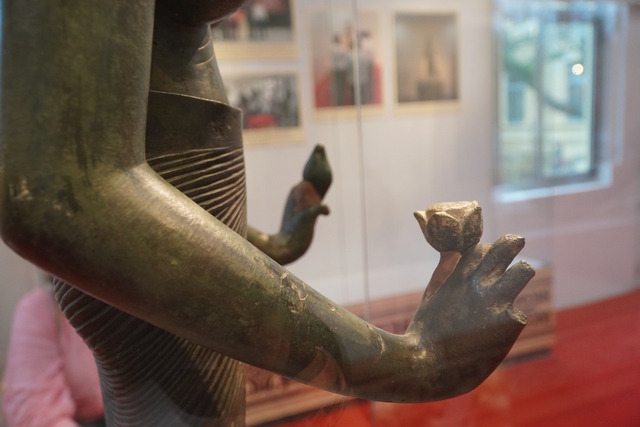
The two ritual objects, the conch and the lotus, were returned to the main artifact in 2023; this is their first public appearance. Photo: Truong Trung / Tuoi Tre
Restored after 45 years apart
The Tara Bodhisattva statue, a national treasure, is 1,200 years old and one of the first 30 Vietnamese antiquities to receive national treasure status.
Although mentioned in a stone inscription at the Dong Duong archaeological site dated 875, excavations by the École française d’Extrême-Orient (EFEO) beginning in 1902 failed to uncover the statue.
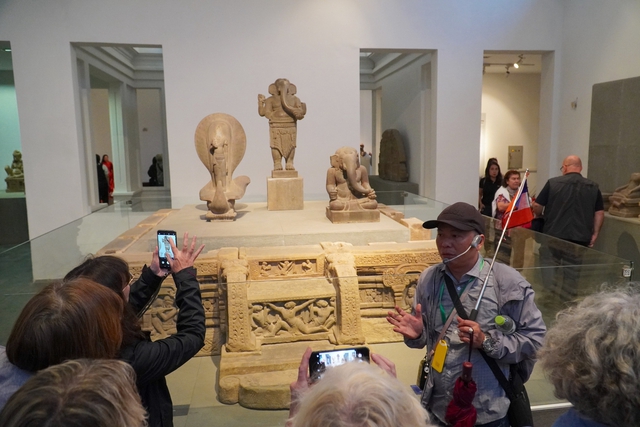
Visitors view the My Son E1 altar (7th–8th centuries), recognized as a national treasure in 2012. Photo: Truong Trung
In 1978, the Tara Bodhisattva was discovered by chance when local residents were digging soil for brickmaking.
Believing the statue might be made of precious metal, they broke off the conch and lotus held in its hands.
The statue was transferred to the Da Nang Museum of Cham Sculpture (before Quang Nam - Da Nang was administratively separated), while the two detached artifacts remained in private hands.
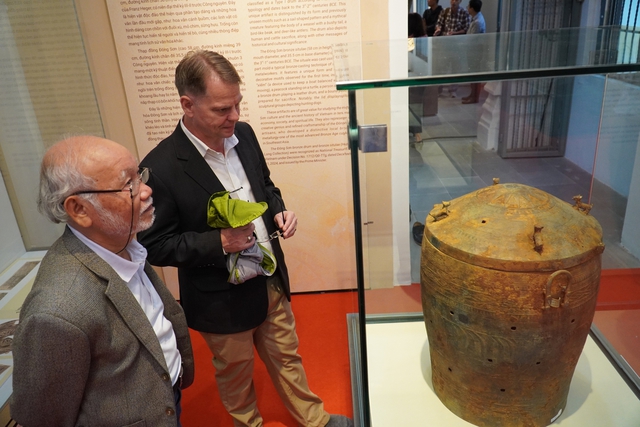
The Dong Son bronze jar (3rd-1st centuries BCE) from the Hoang Long Collection is displayed in this exhibition. Photo: Truong Trung
At the end of 2023, after necessary procedures, the Quang Nam Museum returned these two crucial components to the Da Nang Museum of Cham Sculpture.
This marks the first time the complete statue has been presented to the public since its ritual objects were restored.
The original statue is preserved under strict conservation conditions and is normally inaccessible to most visitors, who usually only see a full-scale 1:1 reconstruction. In this exhibition, both the original and the replica are displayed.
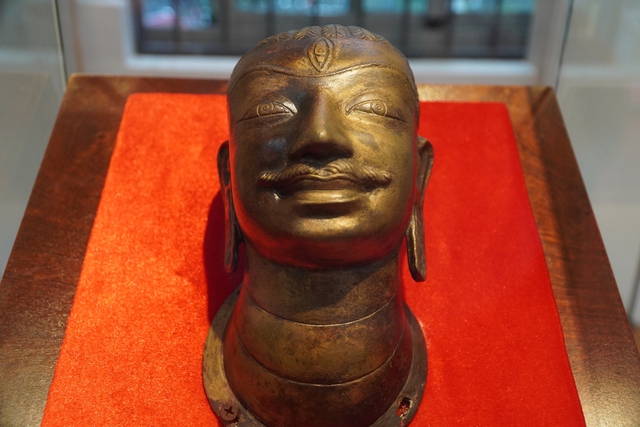
A replica of the gold-alloy Head of Shiva dating from the 10th century, with the original preserved at the Da Nang Museum (formerly the Quang Nam Museum). It was recognized as a national treasure in 2015. Photo: Truong Trung
Three cultures on one land
The exhibition features 14 national treasures presented as original artifacts, along with two replicas available for direct viewing.
The remaining three national treasures, which are tied to monuments or require special conservation conditions, are introduced through documentary materials and curated photographic sets.
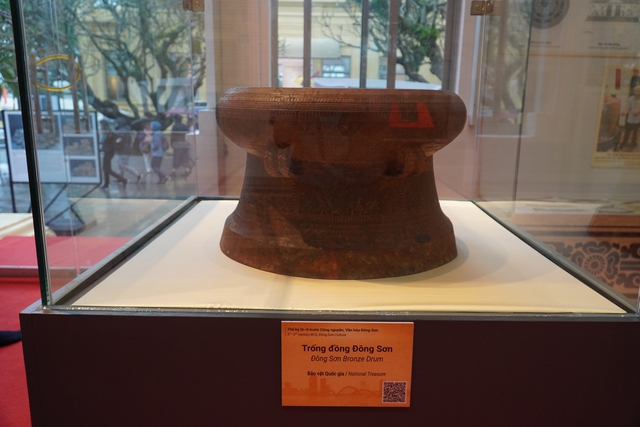
Dong Son bronze drum (3rd-2nd centuries BCE) from the Hoang Long Collection, kept in a private collection in Hoi An Ward, Da Nang City. Photo: Truong Trung / Tuoi Tre
Among the treasures are 15 artifacts of the Champa culture from the collections of the Da Nang Museum of Cham Sculpture (12 items), the My Son World Cultural Heritage Site Management Board (two items), and the Da Nang Museum (one item).
Also on display are two Dong Son cultural treasures from the Hoang Long Collection: a bronze drum and a bronze jar dating from the 3rd to 1st centuries BCE.
The two Sa Huynh cultural treasures on display are the Lai Nghi gold jewelry collection and the Lai Nghi animal-shaped agate bead, both from the Da Nang Museum’s collection and dating from the 3rd century BCE to the mid-1st century.
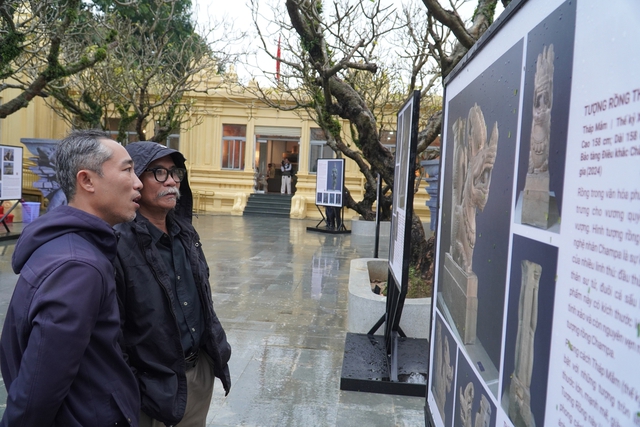
Numerous artifacts, documents, and photographic materials introduced to visitors. Photo: Truong Trung / Tuoi Tre

International visitors scrutinize Cham cultural artifacts. Photo: Truong Trung / Tuoi Tre



Max: 1500 characters
There are no comments yet. Be the first to comment.